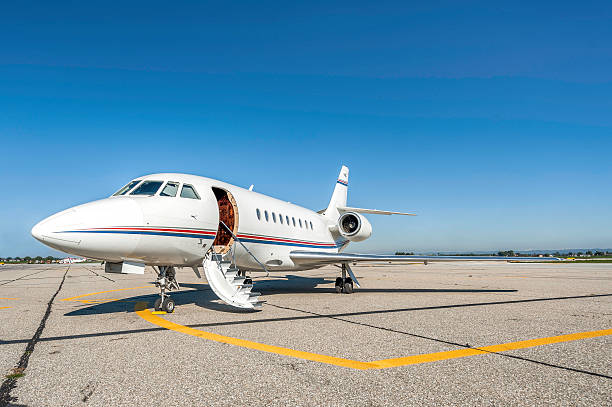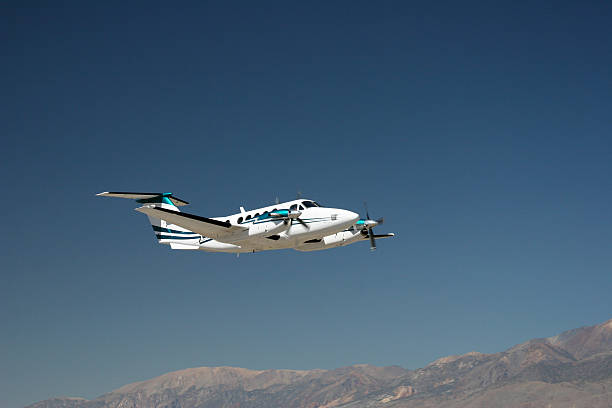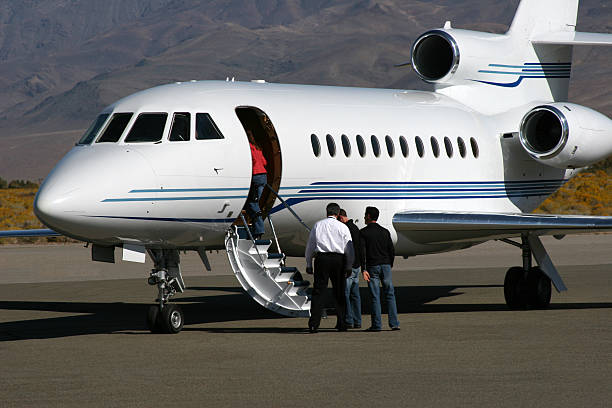Emergency Jet Flights for High-Risk Government Missions

When national security hangs in the balance and every second counts, emergency jet flights become the lifeline for high-risk government missions. These specialized aviation operations represent the intersection of cutting-edge technology, elite personnel, and strategic decision-making that can determine the outcome of critical situations worldwide.
The Critical Role of Emergency Aviation in Government Operations
Emergency jet flights for government missions encompass a broad spectrum of operations, from diplomatic evacuations and intelligence gathering to special operations support and crisis response. These missions operate under unique parameters that distinguish them from conventional aviation, requiring specialized aircraft, highly trained crews, and sophisticated logistical support systems.
The importance of rapid response capability cannot be overstated in government operations. According to the U.S. Government Accountability Office, emergency response times can be reduced by up to 75% when dedicated aviation assets are properly positioned and maintained. This dramatic improvement in response capability has proven decisive in numerous high-stakes scenarios over the past decade.
Types of High-Risk Government Aviation Missions
Diplomatic Evacuations and Embassy Support
One of the most visible applications of emergency government aviation involves diplomatic evacuations from hostile territories. These operations require aircraft capable of operating in contested airspace, often with minimal ground support infrastructure. The 2021 evacuation from Afghanistan demonstrated the critical nature of these capabilities, with military and civilian aircraft conducting over 800 flights in a matter of weeks.
Modern diplomatic evacuation protocols typically involve multiple aircraft types, including:
- Long-range executive jets for high-value personnel transport
- Military transport aircraft for large-scale evacuations
- Specialized communication aircraft for maintaining secure connections
- Medical evacuation platforms for injured personnel
Intelligence and Reconnaissance Operations
Intelligence gathering missions represent another critical application of emergency aviation assets. These operations often require aircraft with specialized sensor packages, extended loiter capabilities, and the ability to operate in denied airspace. The integration of unmanned systems has expanded these capabilities significantly, with over 60% of intelligence-gathering flights now incorporating some form of autonomous technology.
Special Operations Support
Special operations forces rely heavily on aviation support for insertion, extraction, and fire support missions. These operations demand aircraft with unique capabilities including:
- Low-observable characteristics to avoid detection
- Precision navigation systems for accurate positioning
- Advanced communication suites for real-time coordination
- Defensive countermeasures to survive in hostile environments
Aircraft Systems and Technology
Next-Generation Emergency Response Aircraft
The latest generation of government emergency aircraft incorporates advanced technologies that significantly enhance mission capabilities. Modern platforms feature:
Enhanced Avionics Systems: Digital flight management systems with integrated threat detection reduce pilot workload while improving situational awareness. These systems can process over 10,000 data points per second, providing real-time analysis of flight conditions and potential threats.
Advanced Communication Networks: Secure satellite communication systems enable continuous contact with command centers worldwide. Current systems offer bandwidth capabilities exceeding 50 Mbps, supporting high-definition video conferencing and real-time data transmission.
Defensive Systems: Electronic warfare suites and physical countermeasures protect aircraft operating in high-threat environments. These systems have demonstrated effectiveness rates exceeding 95% in controlled testing scenarios.
Fuel Efficiency and Range Considerations
Modern emergency aircraft must balance performance requirements with operational efficiency. New engine technologies have improved fuel efficiency by approximately 20% over the past decade while maintaining the high-performance characteristics essential for emergency operations.
Extended range capabilities are crucial for global operations, with many government aircraft now capable of transoceanic flights without refueling. This capability reduces mission complexity and improves response times for international incidents.
Operational Challenges and Risk Management
Weather and Environmental Factors
Emergency missions often require operations in adverse weather conditions that would ground commercial aircraft. Advanced weather radar systems and de-icing capabilities enable operations in conditions with visibility as low as 100 feet and temperatures reaching -40°F.
Statistical analysis of emergency government flights shows that approximately 35% of missions involve some form of adverse weather conditions, making robust environmental systems essential for mission success.
Airspace Coordination and Diplomatic Clearances
Operating in international airspace requires careful coordination with multiple air traffic control systems and diplomatic protocols. Emergency operations often involve expedited clearance procedures, with average processing times reduced from 72 hours to less than 4 hours for urgent missions.
The complexity of international airspace management has increased significantly, with over 190 countries now requiring advance notification for government aircraft operations. Automated systems now handle much of this coordination, reducing administrative burden on operational personnel.
Security and Threat Assessment
High-risk government missions face numerous security challenges, including:
Surface-to-Air Missile Threats: Modern portable air defense systems pose significant risks to aircraft operating in contested areas. Current threat assessment protocols evaluate over 50 different weapon systems regularly.
Cyber Warfare Concerns: Aircraft communication and navigation systems face increasing cyber threats, requiring robust defensive measures and backup systems.
Intelligence Gathering: Hostile forces actively monitor government aircraft movements, necessitating operational security measures and deceptive routing procedures.
Personnel Requirements and Training
Pilot Qualifications and Certification
Emergency government aviation requires pilots with exceptional skills and specialized training. Typical requirements include:
- Minimum 3,000 flight hours in relevant aircraft types
- Top Secret security clearance for classified missions
- Instrument rating proficiency to 99.5% accuracy standards
- Combat aviation experience for high-risk operations
Training programs for government emergency pilots are among the most rigorous in aviation, with failure rates exceeding 60% in some specialized programs. This intensive selection process ensures only the most capable personnel operate in critical situations.
Support Personnel and Ground Operations
Successful emergency missions require extensive support personnel, including:
Flight Engineers: Responsible for aircraft systems monitoring and emergency procedures
Communications Specialists: Maintain secure contact with command centers
Medical Personnel: Provide emergency medical care during evacuations
Security Teams: Protect aircraft and personnel in hostile environments
The ratio of support personnel to aircrew typically ranges from 8:1 to 12:1 for complex emergency operations, highlighting the extensive logistics required for these missions.
Economic and Budgetary Considerations
Cost Analysis of Emergency Aviation Operations
Emergency government aviation operations represent a significant investment in national security capabilities. Annual operating costs for a typical emergency response fleet exceed $2.3 billion, including:
- Aircraft acquisition and maintenance: 45% of total costs
- Personnel training and salaries: 30% of total costs
- Fuel and operational expenses: 15% of total costs
- Technology upgrades and modifications: 10% of total costs
Cost-Benefit Analysis
Despite high operational costs, emergency aviation capabilities provide substantial returns on investment. Analysis of recent operations suggests that rapid response capabilities have prevented economic losses exceeding $50 billion through timely intervention in crisis situations.
The diplomatic value of emergency evacuation capabilities alone justifies significant investment, with successful operations enhancing international relationships and protecting national interests globally.
Future Developments and Emerging Technologies
Autonomous Flight Systems
The integration of autonomous flight capabilities represents the next major advancement in emergency government aviation. Current development programs focus on:
Semi-Autonomous Operations: Reducing pilot workload through automated systems while maintaining human oversight
Unmanned Emergency Response: Developing remotely piloted aircraft for high-risk missions
Artificial Intelligence Integration: Enhancing decision-making capabilities through machine learning systems
Advanced Propulsion Technologies
Next-generation propulsion systems promise to revolutionize emergency aviation capabilities:
Hybrid Electric Systems: Reducing fuel consumption while maintaining performance
Supersonic Capabilities: Enabling rapid response across intercontinental distances
Alternative Fuels: Reducing environmental impact while maintaining operational flexibility
Enhanced Communication Networks
Future communication systems will provide unprecedented connectivity and security:
Quantum Communication: Ensuring absolute security for sensitive communications
Global Satellite Networks: Providing continuous coverage regardless of geographic location
Integrated Information Systems: Combining multiple data sources for enhanced situational awareness
International Cooperation and Coordination
Multilateral Emergency Response Frameworks
International cooperation in emergency aviation continues to evolve, with new frameworks enabling rapid response across national boundaries. Current agreements facilitate:
- Expedited airspace clearances for humanitarian missions
- Shared intelligence gathering for threat assessment
- Joint training exercises for interoperability
- Standardized procedures for multinational operations
Diplomatic Protocols and Agreements
Emergency aviation operations require careful navigation of international law and diplomatic protocols. Recent agreements have streamlined procedures for:
Overflight Rights: Reducing approval times for emergency missions
Landing Permissions: Enabling rapid access to international airports
Customs and Immigration: Expediting clearance procedures for emergency personnel
Equipment Transport: Facilitating movement of specialized equipment across borders
Conclusion
Emergency jet flights for high-risk government missions represent a critical capability in today's complex geopolitical environment. These operations demand the highest levels of technology, training, and coordination to succeed in challenging circumstances where failure is not an option.
The continued evolution of emergency aviation capabilities, driven by advancing technology and changing threat environments, ensures that government agencies will maintain the rapid response capabilities essential for national security. Investment in these capabilities, while substantial, provides irreplaceable strategic advantages that cannot be achieved through conventional means.
As global challenges continue to evolve, emergency government aviation will undoubtedly adapt and expand, incorporating new technologies and operational concepts to meet emerging requirements. The success of these operations depends not only on advanced aircraft and equipment but also on the skilled personnel who operate them and the comprehensive support systems that enable their missions.
The future of emergency government aviation lies in the continued integration of advanced technologies, enhanced international cooperation, and the development of increasingly capable personnel. These elements, working together, will ensure that emergency aviation continues to serve as a vital tool for protecting national interests and responding to crises worldwide.
References
- U.S. Government Accountability Office - Emergency Response Aviation
- Federal Aviation Administration - Special Operations Guidelines
- International Civil Aviation Organization - Emergency Procedures
- Congressional Research Service - Government Aviation Operations
- Department of Defense - Aviation Safety and Emergency Response















